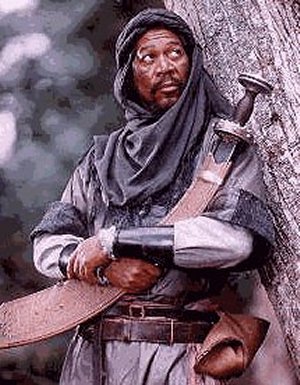Lesson 5: Diversity
Attention

"Allah loves wondrous variety"
-
Akeem, Robin Hood: Prince of Thieves
Learning Outcomes
Upon completion of this lesson's material, students will be able to:
- Identify Cultural Universals in their personal world
- Theorize about the relationship between culture and education practices on a global scale
Teaching
Ethnocentrism
This concept needs to be first and foremost on any discussion related to diversity. We all have a degree of ethnocentrism because we all see the world from our own cultural viewpoint. What is normal and expected for us shapes the way we view other practices in the world.
Diversity
When we speak to issues of diversity we can be discussing racial, height, skill, and weight diversity, but we are most likely talking about CULTURAL diversity.
Cultural diversity simply means that among many people there is a variety of groups with unique MATERIAL and NON-MATERIAL culture.
There are two ways to approach teaching diversity...one emphasizes the ways in which "we are all the same" while the other emphasizes honoring our "differences".
Cultural Universals - Ways in which we are all the Same
CU's are components of culture that are shared by nearly all societies around the world. It is pretty intersting to consider how humanity has so many shared aspects of culture, but that they are expressed in so many different ways.
Here is a link to Wikipedia on Cultural Universals
Cultural Diverstity - Ways in which we are all Different
While many of is in this class may come from a very similar cultural background, there is a tremendous diversity based on our family and community cultures. We are going to explore a number of questions related to culture and diversity in class.
Assessment
Lesson 5 Quiz
Review the list of Cultural Universals in Wikipedia. Select one and answer the following questions:
- Tell a story from your life that exemplifies this particular cultural universal and how it manifests in your life.